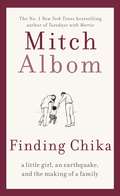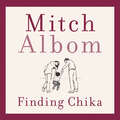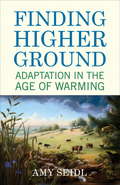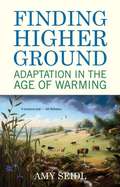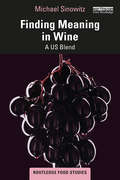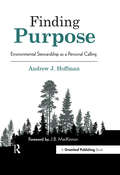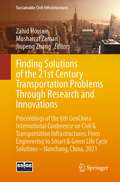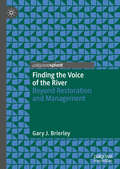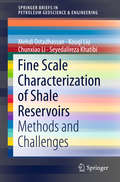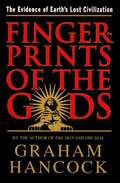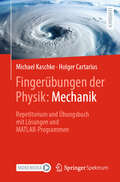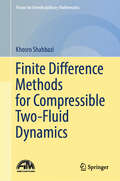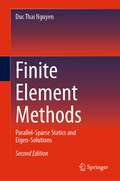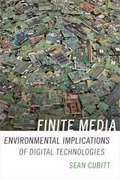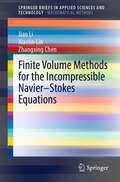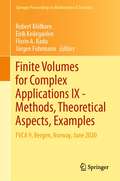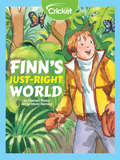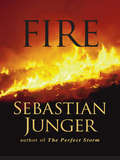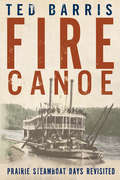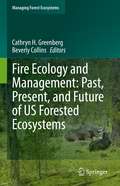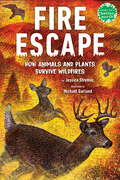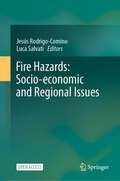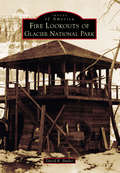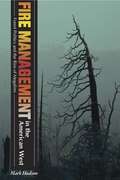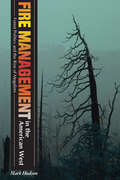- Table View
- List View
Finding Chika: A heart-breaking and hopeful story about family, adversity and unconditional love
by Mitch AlbomFROM THE MASTER STORYTELLER WHOSE BOOKS HAVE TOUCHED THE HEARTS OF OVER 40 MILLION READERS'Mitch Albom sees the magical in the ordinary' Cecilia Ahern__________Chika Jeune came into Mitch Albom's life by chance. Growing up in the aftermath of the devastating 2010 Haiti Earthquake, at three years old she tragically lost her mother and was brought to the orphanage run by Mitch and his wife, Janine. Chika made a quick impression. Brave and self-assured, she delighted those around her. But everything changed when Chika was diagnosed with a terminal disease that no doctor in Haiti could treat. This discovery sparked a two-year, around-the-world journey in search of a cure. As Chika's boundless optimism and humour taught Mitch the joys of caring for a child, he learned that a relationship built on love can never be lost.__________WHAT READERS ARE SAYING ABOUT FINDING CHIKA'A powerful, emotional story''If you read one book this year, make it this one!''A beautifully written book, heart-breaking and uplifting in equal measure''An amazing journey of determination and love''I laughed, I cried, and just couldn't put it down'
Finding Chika: A heart-breaking and hopeful story about family, adversity and unconditional love
by Mitch AlbomChika Jeune was born three days before the devastating earthquake that decimated Haiti in 2010. She spent her infancy in extreme poverty, and when her mother died giving birth to a baby brother, Chika was brought to the Have Faith Haiti Orphanage that Mitch and his wife, Janine operate.Chika's arrival made a quick impression. Brave and self-assured, even as a three-year-old, she delighted the other kids and teachers. But at age five, Chika was suddenly diagnosed with a terminal disease that no doctor in Haiti could help with.Mitch and Janine took Chika to America, hoping that treatment there would enable her to go back home. Instead, Chika became a permanent part of their lives, as they embarked on a two-year, around-the-world journey to find a cure. As Chika's boundless optimism and humour taught Mitch the joys of caring for a child, he learnt that a relationship built on love, no matter what blows it takes, can never be lost.This is Mitch Albom at his most poignant, powerful and personal. Chika is a celebration of a girl, her adoptive guardians, and the incredible bond they formed - a devastatingly beautiful portrait of what it means to be a family, regardless of how it is made.
Finding Higher Ground
by Amy SeidlWhile much of the global warming conversation rightly focuses on reducing our carbon footprint, the reality is that even if we were to immediately cease emissions, we would still face climate change into the next millennium. In Finding Higher Ground, Amy Seidl takes the uniquely positive--yet realistic--position that humans and animals can adapt and persist despite these changes. Drawing on an emerging body of scientific research, Seidl brings us stories of adaptation from the natural world and from human communities. She offers examples of how plants, insects, birds, and mammals are already adapting both behaviorally and genetically. While some species will be unable to adapt to new conditions quickly enough to survive, Seidl argues that those that do can show us how to increase our own capacity for resilience if we work to change our collective behavior. In looking at climate change as an opportunity to establish new cultural norms, Seidl inspires readers to move beyond loss and offers a refreshing call to evolve.From the Hardcover edition.
Finding Higher Ground: Adaptation in the Age of Warming
by Amy SeidlAn ecologist takes the uniquely positive--yet realistic--position that we can adapt and persist despite the inevitable effects of climate change. While much of the global warming conversation rightly focuses on reducing our carbon footprint, the reality is that even if we were to immediately cease emissions, we would still face climate change into the next millennium. In Finding Higher Ground, Amy Seidl takes the uniquely positive--yet realistic--position that humans and animals can adapt and persist despite these changes. Drawing on an emerging body of scientific research, Seidl brings us stories of adaptation from the natural world and from human communities. She offers examples of how plants, insects, birds, and mammals are already adapting both behaviorally and genetically. Within ten years, one plant species in a drought-stricken area has evolved to fit its life cycle into the shorter growing season. Red squirrels are breeding earlier to take advantage of the food supplied by an earlier spring. And some birds are migrating shorter distances, or not at all, as their northern habitats become milder. While some species will be unable to adapt to new conditions quickly enough to survive, Seidl argues that those that do can show us how to increase our own capacity for resilience. She tells of a young farmer experimenting with adaptive strategies for local crops, architects using biomimicry to design buildings that actually contribute to their surrounding ecosystems, and the establishment of decentralized and renewable energy banks. While Seidl admits that these efforts alone won't change the world, she hopes that taken together they can form the basis for a new, revolutionary set of ideas to live by, much like the efforts that brought about abolition, women's suffrage, and the eight-hour workday. In looking at climate change as an opportunity to establish new cultural norms, Seidl's perspective inspires readers to move beyond loss and offers a refreshing call to evolve.
Finding Meaning in Wine: A US Blend (Routledge Food Studies)
by Michael SinowitzThis book examines controversies in American wine culture and how those controversies intersect with and illuminate current academic and cultural debates about the environment and about interpretation. With a specific focus on the United States of America, the methods that we use to discuss literature and other art are applied to wine-making and wine culture. The book explores the debates about how to evaluate wine and the problems inherent in numerical scoring as well as evaluative tasting notes, whether winemakers can be artists, the discourse in wine culture involving natural wine and biodynamic farming, as well as how people judge what makes a wine great. These interpretative commitments illuminate an underlying metaphysics and allegiance to a culture of reason or feeling. The discussions engage with a broad range of writers and thinkers, such as Roland Barthes, Susan Sontag, Louis Menand, Michael Pollan, Greg Garrard, John Guillory, Amitov Ghosh, Pierre Bourdieu, and Barbara Herrnstein-Smith. The book draws upon not only a number of texts produced by wine critics, wine writers, literary critics and theorists but also extensive interviews with wine writers and multiple California winemakers. These interviews contribute to a unique reflection on wine and meaning. This book will be of great interest to readers looking to learn more about wine from cultural, literary, and philosophical perspectives.
Finding Purpose: Environmental Stewardship as a Personal Calling
by Andrew J. HoffmanBoth thoughtful and thought-provoking, Finding Purpose aims to challenge our understanding of how humanity interacts with planet Earth, and our role within this. This book is an invitation: would you like to participate in one of the most important projects of imagination, perhaps the greatest ever, in human history? Distilling and refining over 20 pieces from a lifetime of work in academia and trade, across speeches, blogs, editorials and essays, Hoffman invites us to look beyond material growth and explore the role of the individual and business in discovering a wider purpose to bring about a balanced and sustainable society. The reader is encouraged to consider humanity’s relationship with the environment through different lenses: business, academia, faith-based and cultural. By bringing them together, Hoffman encourages us to understand our relationship with the planet in a far more holistic sense. Drawing on ideas from philosophy, literature, natural sciences and politics, Hoffman ensures that the ideas he explores are wholly accessible and applicable. Fully substantiated through various research and examples, the issues described are consistently made relevant to the reader.Finding Purpose is the perfect book for anyone – from student to CEO – thinking about their place in the world, and how making changes in our own lives and societies can impact on the world around us.
Finding Solutions of the 21st Century Transportation Problems Through Research and Innovations: Proceedings of the 6th GeoChina International Conference on Civil & Transportation Infrastructures: From Engineering to Smart & Green Life Cycle Solutions -- Nanchang, China, 2021 (Sustainable Civil Infrastructures)
by Musharraf Zaman Zahid Hossain Jiupeng ZhangThis volume presents challenges in transportation infrastructures and geotechniques, advancements in recycling, soil stabilization and reinforcement technologies, and assessments of roadway conditions using modern tools and techniques. The articles presented in this volume focus on fundamental investigations on various aspects of civil engineering materials and structures. The scope of this volume is the application of findings for solving problems in geotechnical, pavement, concrete and transportation engineering using through smart, green and emerging techniques. The primary audience of this work will be researchers, professionals, and practitioners around the world. This volume is based on contributions to the 6th GeoChina International Conference on Civil & Transportation Infrastructures: From Engineering to Smart & Green Life Cycle Solutions -- Nanchang, China, 2021.
Finding the Voice of the River: Beyond Restoration and Management
by Gary J. BrierleyThis book addresses societal relationships to river systems, highlighting many unexplored possibilities in how we know and manage our rivers. Brierley contends that although we have good scientific understanding of rivers, with remarkable prospect for profound improvements to river condition, management applications greatly under-deliver. He conceptualizes approaches to river repair in two very different ways: Medean (competitive) and Gaian (cooperative). Rather than ‘managing’ rivers to achieve particular anthropogenic goals (the former option), this book adopts a more-than-human approach to ‘living with living rivers’ (the latter option), applying a river rights framework that conceptualizes rivers as sentient entities.Chapters build on significant experience across many parts of the world, emphasizing the diverse array of river attributes and relationships to be protected and the wide range of problems to be addressed. Although the book has an environmental focus, it is framed as an argument in popular philosophy, contemplating the agency of rivers as place-beings. It will be of great value to academics, students and general readers interested in protecting river systems.
Fine Scale Characterization of Shale Reservoirs: Methods And Challenges (Springerbriefs In Petroleum Geoscience And Engineering Ser.)
by Mehdi Ostadhassan Kouqi Liu Chunxiao Li Seyedalireza KhatibiThis book summarizes the authors' extensive experience and interdisciplinary approach to demonstrate how acquiring and integrating data using a variety of analytical equipment can provide better insights into unconventional shale reservoir rocks and their constituent components. It focuses on a wide range of properties of unconventional shale reservoirs, discussing the use of conventional and new analytical methods for detailed measurements of mechanical properties of both organic and inorganic constituent elements as well as of the geochemical characteristics of organic components and their origins. It also addresses the investigation of porosity, pore size and type from several perspectives to help us to define unconventional shale formation. All of these analyses are treated individually, but brought together to present the rock sample on a macro scale. This book is of interest to researchers and graduate students from various disciplines, such as petroleum, civil, and mechanical engineering, as well as from geoscience, geology, geochemistry and geophysics. The methods and approaches can be further extended to biology and medicine.
Fingerprints of the Gods: The Evidence of Earth's Lost Civilization
by Graham HancockOn the great mysteries of nature, history, and man.
Fingerübungen der Physik: Repetitorium und Übungsbuch mit Lösungen und MATLAB-Programmen
by Michael Kaschke Holger CartariusDieses Lehr- und Lernbuch erscheint in mehreren Bänden und ist gleichsam ein Repetitorium als auch Arbeitsbuch zu wenig behandelten Kapiteln des Physikstudiums. In diesem Band wird die Physik der Bewegung von Körpern und des Kontinuums behandelt. Zahlreiche spannende Probleme aus dem Alltag, der Physikgeschichte und der modernen Forschung werden sowohl anschaulich erklärt als auch mathematisch-physikalisch beschrieben. Die ausführlichen Lösungsvorschläge mit MATLAB-Programmen dienen dabei als „Fingerübungen“ für ein tieferes physikalisches Verständnis. Der Inhalt Physik der Bewegung – Physik des Kontinuums Die Zielgruppe Das Buch richtet sich an alle, die Freude an der Physik haben und diese für verschiedene Fragestellungen anwenden wollen. Besonderen Nutzen daraus werden Studierende und Promovierende der Physik, Mathematik und Ingenieurswissenschaften, ebenso wie des Lehramtes für naturwissenschaftliche Fächer gewinnen. Genauso ist das Buch für Dozentinnen und Dozenten der Physik an Hochschulen und Universitäten gedacht, aber auch für Lehrkräfte der Physik an Gymnasien, die aus dem Fundus der Übungen und Beispiele Anregungen für eigene Problemstellungen und Projekte gewinnen können. Vorkenntnisse Das Physikwissen des Bachelor-Studiums stellt in etwa die Grundlage dar, auf der das Buch aufbaut. Eine Reihe von Kapiteln lassen sich auch mit den Kenntnissen eines Leistungskurses Physik an den Gymnasien erschließen. Die Übungsaufgaben sind nach 3 Schwierigkeitsklassen gegliedert.
Finite Difference Methods for Compressible Two-Fluid Dynamics (Forum for Interdisciplinary Mathematics)
by Khosro ShahbaziFinite Difference Methods for Compressible Two-Fluid Dynamics provides the essentials of high-order numerical methods for compressible single-fluid and two-fluid transport phenomena. This book can serve as a first course on the numerical methods for transport phenomena or fluid dynamics for students in mechanical, aerospace, and chemical engineering, applied mathematics, and physics at the senior level of an undergraduate or graduate degree. It also provides foundations and algorithmic details for implementing the most recent numerical schemes for compressible flows and extending them to include other physics, such as elasticity, reaction, and magnetohydrodynamics. The book's presented schemes enable computations for broad applications, including shock-induced interfacial instability and turbulence, shock-bubble interactions, and detonation, to name a few. For a broad reach and impact, the numerical schemes satisfy the simultaneous requirements of simplicity, extendibility, and efficiency on serial and parallel computers. The physics of the compressible single- and two-fluid system also guide the design and analysis of the numerical methods. The enabled direct numerical simulations also help obtain accurate data for tuning the emerging physics-based neuromorphic algorithms.
Finite Element Methods: Parallel-Sparse Statics and Eigen-Solutions
by Duc Thai NguyenThis new edition includes three new chapters, 7 through 9, that have very broad, practical applications in engineering and science. In addition, the author’s latest research results incorporated into the new textbook demonstrates better performance than the popular METIS software for partitioning graphs, partitioning finite element meshes, and producing fill-reducing orderings for sparse matrices. The new Chapter 8, and its pre-requisite, Chapter 7, present a state-of-the-art algorithm for computing the shortest paths for real-life (large-scale) transportation networks with minimum computational time. This approach has not yet appeared in any existing textbooks and it could open the doors for other transportation engineering applications. Chapter 9 vastly expands the scope of the previous edition by including sensitivity (gradient) computation and MATLAB’s built-in function “fmincon” for obtaining the optimum (or best) solution for general engineering problems.
Finite Media: Environmental Implications of Digital Technologies
by Sean CubittWhile digital media give us the ability to communicate with and know the world, their use comes at the expense of an immense ecological footprint and environmental degradation. In Finite Media Sean Cubitt offers a large-scale rethinking of theories of mediation by examining the environmental and human toll exacted by mining and the manufacture, use, and disposal of millions of phones, computers, and other devices. The way out is through an eco-political media aesthetics, in which people use media to shift their relationship to the environment and where public goods and spaces are available to all. Cubitt demonstrates this through case studies ranging from the 1906 film The Story of the Kelly Gang to an image of Saturn taken during NASA's Cassini-Huygens mission, suggesting that affective responses to images may generate a populist environmental politics that demands better ways of living and being. Only by reorienting our use of media, Cubitt contends, can we overcome the failures of political elites and the ravages of capital.
Finite Volume Methods for the Incompressible Navier–Stokes Equations (SpringerBriefs in Applied Sciences and Technology)
by Jian Li Zhangxing Chen Xiaolin LinThe book aims to provide a comprehensive understanding of the most recent developments in finite volume methods. Its focus is on the development and analysis of these methods for the two- and three-dimensional Navier-Stokes equations, supported by extensive numerical results. It covers the most used lower-order finite element pairs, with well-posedness and optimal analysis for these finite volume methods.The authors have attempted to make this book self-contained by offering complete proofs and theoretical results. While most of the material presented has been taught by the authors in a number of institutions over the past several years, they also include several updated theoretical results for the finite volume methods for the incompressible Navier-Stokes equations. This book is primarily developed to address research needs for students and academic and industrial researchers. It is particularly valuable as a research reference in the fields of engineering, mathematics, physics, and computer sciences.
Finite Volumes for Complex Applications IX - Methods, Theoretical Aspects, Examples: FVCA 9, Bergen, Norway, June 2020 (Springer Proceedings in Mathematics & Statistics #323)
by Jürgen Fuhrmann Robert Klöfkorn Eirik Keilegavlen Florin A. RaduThe proceedings of the 9th conference on "Finite Volumes for Complex Applications" (Bergen, June 2020) are structured in two volumes. The first volume collects the focused invited papers, as well as the reviewed contributions from internationally leading researchers in the field of analysis of finite volume and related methods. Topics covered include convergence and stability analysis, as well as investigations of these methods from the point of view of compatibility with physical principles. Altogether, a rather comprehensive overview is given on the state of the art in the field. The properties of the methods considered in the conference give them distinguished advantages for a number of applications. These include fluid dynamics, magnetohydrodynamics, structural analysis, nuclear physics, semiconductor theory, carbon capture utilization and storage, geothermal energy and further topics. The second volume covers reviewed contributions reporting successful applications of finite volume and related methods in these fields. The finite volume method in its various forms is a space discretization technique for partial differential equations based on the fundamental physical principle of conservation. Many finite volume methods preserve further qualitative or asymptotic properties, including maximum principles, dissipativity, monotone decay of free energy, and asymptotic stability, making the finite volume methods compatible discretization methods, which preserve qualitative properties of continuous problems at the discrete level. This structural approach to the discretization of partial differential equations becomes particularly important for multiphysics and multiscale applications. The book is a valuable resource for researchers, PhD and master’s level students in numerical analysis, scientific computing and related fields such as partial differential equations, as well as engineers working in numerical modeling and simulations.
Finn's Just-Right World
by Charnan SimonFinn is bored! She is stuck inside with her family because of the cold weather. While she tries to convince her family to go to the zoo, her brother tries to teach her about global warming. When Finn is skeptical, her father decides to take the whole family to the zoo to teach them about greenhouse gases and their effect on Earth.
Fire
by Sebastian JungerForest fires, terrorism, war: explorations of danger by the author of The Perfect Storm. For readers and viewers of The Perfect Storm, opening this long-awaited new work by Sebastian Junger will be like stepping off the deck of the Andrea Gail and into the inferno of a fire burning out of control in the steep canyons of Idaho. Here is the same meticulous prose brought to bear on the inner workings of a terrifying elemental force; here is a cast of characters risking everything in an effort to bring that force under control. Few writers have been to so many desperate corners of the globe as has Sebastian Junger; fewer still have provided such starkly memorable evocations of characters and events. From the murderous mechanics of the diamond trade in Sierra Leone to the logic of guerrilla warfare in Afghanistan and the forensics of genocide in Kosovo, this new collection of Junger's nonfiction will take you places you wouldn't dream of going to on your own.
Fire Canoe: Prairie Steamboat Days Revisited
by Ted BarrisThe story of steamboating in the Canadian West comes to life in the voices of those aboard the vessels of the waterways of the Prairies. Their captains were seafaring skippers who had migrated inland. Their pilots were indigenous people who could read the shoals, sandbars, and currents of Prairie waterways. Their operators were businessmen hoping to reap the benefits of commercial enterprise along the shores and banks of Canada’s inland lakes and rivers. Their passengers were fur traders, adventure-seekers, and immigrants opening up the West. All of them sought their futures and fortunes aboard Prairie steamboats, decades before the railways arrived and took credit for the breakthrough. Aboriginal people called them “fire canoes,” but in the latter half of the nineteenth century, their operators promoted them as Mississippi-type steamship queens delivering speedy transport, along with the latest in technology and comfort. Then, as the twentieth century dawned, steamboats and their operators adapted. They launched smaller, more tailored steamers and focused on a new economy of business and pleasure in the West. By day their steamboats chased freight, fish, lumber, iron ore, real estate, and gold-mining contracts. At night, they brought out the Edwardian finery, lights, and music to tap the pleasure-cruise market.
Fire Ecology and Management: Past, Present, and Future of US Forested Ecosystems (Managing Forest Ecosystems #39)
by Beverly Collins Cathryn H. GreenbergThis edited volume presents original scientific research and knowledge synthesis covering the past, present, and potential future fire ecology of major US forest types, with implications for forest management in a changing climate. The editors and authors highlight broad patterns among ecoregions and forest types, as well as detailed information for individual ecoregions, for fire frequencies and severities, fire effects on tree mortality and regeneration, and levels of fire-dependency by plant and animal communities. The foreword addresses emerging ecological and fire management challenges for forests, in relation to sustainable development goals as highlighted in recent government reports. An introductory chapter highlights patterns of variation in frequencies, severities, scales, and spatial patterns of fire across ecoregions and among forested ecosystems across the US in relation to climate, fuels, topography and soils, ignition sources (lightning or anthropogenic), and vegetation. Separate chapters by respected experts delve into the fire ecology of major forest types within US ecoregions, with a focus on the level of plant and animal fire-dependency, and the role of fire in maintaining forest composition and structure. The regional chapters also include discussion of historic natural (lightning-ignited) and anthropogenic (Native American; settlers) fire regimes, current fire regimes as influenced by recent decades of fire suppression and land use history, and fire management in relation to ecosystem integrity and restoration, wildfire threat, and climate change. The summary chapter combines the major points of each chapter, in a synthesis of US-wide fire ecology and forest management into the future.This book provides current, organized, readily accessible information for the conservation community, land managers, scientists, students and educators, and others interested in how fire behavior and effects on structure and composition differ among ecoregions and forest types, and what that means for forest management today and in the future.
Fire Escape: How Animals and Plants Survive Wildfires (Books for a Better Earth)
by Jessica StremerA timely middle grade nonfiction overview of the incredible ways animals detect, respond, and adapt to wildfires, as well as how climate change is affecting the frequency and severity of these devastating events in nature.Goats and beavers. Drones and parachutes. Pinecones and beetles. What do they have in common? Believe it or not, they are all crucial tools in fighting, preventing, and adapting to wildfires!These vicious fires are spreading faster and burning hotter than at any other time in history. Ongoing droughts, warming weather, and a history of poor forest management have extended the traditional wildfire season beyond the summer months. It is a matter of life and death for wildlife worldwide.This breathtaking nonfiction book focuses on unique angles to a hot topic, including injury rehabilitation efforts, species that use wildfires to their advantage, how to help area repopulation, and the animals that help to prevent/fight wildfires. A riveting, kid friendly text is accompanied by stunning woodcut illustrations and full-color photographs, as well as extensive back matter with glossary, sources, and index.Books for a Better Earth are designed to inspire children to become active, knowledgeable participants in caring for the planet they live on.A Junior Library Guild Gold Standard Selection
Fire Hazards: Socio-economic and Regional Issues
by Jesús Rodrigo-Comino Luca SalvatiThe open access book aims to show the readers novel, relevant and reproducible power of synergistic collaborations between European research groups and stakeholders with the objective to synthesize the existing knowledge and expertise about fire management and hazard and defining a concerted research agenda that promotes an integrated approach to create fire-resilient landscapes, taking into account biological, biochemical and physical, but also socio-economic, historical, geographical, sociological, perception and policy constraints. This is an urgent societal need due to the expected further intensification and geographical spreading of wildfire regimes under Global Change. Fire has been part of the Earth's System for the last 400 million years, and humans are the sole species that controls and manages fire. We have used fire for over a million years, both, as hunter-gatherers managing the landscape with fire and as farmers using fire as a low-cost, efficient and ecological tool for clearing and maintaining the productivity of the land. Fire has been highlighted as the most influential element in the development of human societies. The increase in prolonged dry and hot periods observed in many regions of the world is exacerbating the risk of fire. The causes of increased fire risk are not only linked to climate change but are also a consequence of economic and social changes and political decisions. Over the past few decades, many countries’ rural areas have seen significant depopulation and a reduction in land management as residents moved to cities or even other countries in search of work. The resulting rural depopulation has led to revegetation of the abandoned agricultural land, which favors fire spread. The enhanced risk of fires is moving beyond the capacity of even the best-funded wildland firefighting teams and therefore calls for the development of new approaches to fire management that are key nowadays at different scales. Instead of focusing primarily on increasing firefighting capabilities, a more effective approach is needed that focuses on long-term fire prevention through vegetation management by reducing fuel load or managing fuel type and fuel continuity at a landscape level. FIRElinks (COST Action CA18135) is developing the EU-spanning network of scientists and practitioners involved in forest fire research and land management with backgrounds such as fire dynamics, fire risk management, fire effects on vegetation, fauna, soil and water and socio-economic, historical, geographical, political perception and land management approaches. Among the different Working Groups, number 5 is aimed to connect communities from different scientific and geographic backgrounds, allowing the discussion of different experiences and the emergence of new approaches to fire research, human management, regional issues and socio-economic aspects.
Fire Lookouts of Glacier National Park
by David R. ButlerThe first fire lookouts in the Glacier National Park region were simply high points atop mountain peaks with unimpeded views of the surrounding terrain. Widespread fires in the 1910s and 1920s led to the construction of more permanent lookouts, first as wooden pole structures and subsequently as a variety of one- and two-story cabin designs. Cooperating lookouts in Glacier Park, the Flathead National Forest, and the Blackfeet Indian Reservation provided coverage of forests throughout Glacier National Park. Beginning in the 1950s, many of the lookouts were decommissioned and eventually destroyed. This volume tells the story of the rise and fall of the extensive fire lookout network that protected Glacier National Park during times of high fire danger, including lookouts still operating today.
Fire Management in the American West
by Mark HudsonMost journalists and academics attribute the rise of wildfires in the western United States to the USDA Forest Service's successful fire-elimination policies of the twentieth century. However, in Fire Management in the American West, Mark Hudson argues that although a century of suppression did indeed increase the hazard of wildfire, the responsibility does not lie with the USFS alone. The roots are found in the Forest Service's relationships with other, more powerful elements of society--the timber industry in particular. Drawing on correspondence both between and within the Forest Service and the major timber industry associations, newspaper articles, articles from industry outlets, and policy documents from the late 1800s through the present, Hudson shows how the US forest industry, under the constraint of profitability, pushed the USFS away from private industry regulation and toward fire exclusion, eventually changing national forest policy into little more than fire policy. More recently, the USFS has attempted to move beyond the policy of complete fire suppression. Interviews with public land managers in the Pacific Northwest shed light on the sources of the agency's struggles as it attempts to change the way we understand and relate to fire in the West. Fire Management in the American West will be of great interest to environmentalists, sociologists, fire managers, scientists, and academics and students in environmental history and forestry.
Fire Management in the American West: Forest Politics and the Rise of Megafires (G - Reference, Information And Interdisciplinary Subjects Ser.)
by Mark HudsonMost journalists and academics attribute the rise of wildfires in the western United States to the USDA Forest Service's successful fire-elimination policies of the twentieth century. However, in Fire Management in the American West, Mark Hudson argues that although a century of suppression did indeed increase the hazard of wildfire, the responsibility does not lie with the USFS alone. The roots are found in the Forest Service's relationships with other, more powerful elements of society--the timber industry in particular. Drawing on correspondence both between and within the Forest Service and the major timber industry associations, newspaper articles, articles from industry outlets, and policy documents from the late 1800s through the present, Hudson shows how the US forest industry, under the constraint of profitability, pushed the USFS away from private industry regulation and toward fire exclusion, eventually changing national forest policy into little more than fire policy. More recently, the USFS has attempted to move beyond the policy of complete fire suppression. Interviews with public land managers in the Pacific Northwest shed light on the sources of the agency's struggles as it attempts to change the way we understand and relate to fire in the West. Fire Management in the American West will be of great interest to environmentalists, sociologists, fire managers, scientists, and academics and students in environmental history and forestry.
